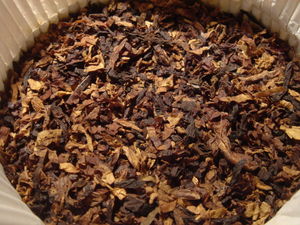The potato famine in the 1840s in Ireland caused more than 1 million Irish immigrants to immigrate to the United States (Baba, 2007). Along the way, the immigrants were forced to face harsh conditions, such as small living quarters and poorly cooked food (Baba, 2007).
Once they arrived in the United States, things were even more chaotic. Peddlers boarded the ships to deal directly with the immigrants and cheated the Irish out of their money, selling them tickets to the wrong destination. Ellis Island was opened after Castle Garden Receiving Station was charged with allegations of corruption. However, Ellis could only process around 5,000 people each day, forcing several thousand to remain on the ships for several days until they had room for them at Ellis Island. (Baba, 2007).
Once the immigrants had been accepted into the country, they lived in conditions where they shared rooms with at least one other family. Often these places had no indoor plumbing or running water. Sewage collected in outhouses attracted rats, which then spread disease to the children (Baba, 2007).
When the Irish tried to find work, they were given only the lowest paying jobs which required little skill. The pay was often under 75 cents for a 10-12 hour day of demanding work. Irish women were only allowed to work one of two types of jobs, a domestic servant or a factory worker. Although the domestic servants worked longer hours, these were preferred over the factory jobs, often considered dangerous and low-paying (Baba, 2007).
As many more immigrants came to American, the hatred toward the Irish among Americans grew. Irish were thought of as lazy and stupid and were called by the term “Paddy”, which was a derogatory term. Cartoonists drew the Irish looking like apes, with jutting jaws and sloping foreheads, which contributed to the discrimination that the Irish received (Baba, 2007).
The Irish were blamed for causing America’s economic problems. Since many Irish had immigrated to America, Americans had thought that this would cause them to find lesser jobs with lower pay rates. It soon became acceptable to discriminate against the Irish (Baba, 2007).
Several of job postings prevented Irish from applying and companies would refuse to higher them or pay them significantly less than other workers. If the Irish protested, the militia would be called in to force them to accept the conditions.
The Irish dealt with the harsh treatment in several ways. Some changed their names and religions to escape the discrimination. The Catholic church provided sanctuary for the Irish, as many of the Catholic priests were Irish and the church provided a connection to their homeland (Baba, 2007).
Eventually, the resentment of the Irish, particularly the Irish-Catholics, led to the Know Nothing political party. This political party was particularly popular during the early 1850s (Welch, 2006).
The growing Irish presence both in the cities and politically, worried some Americans. Some thought of the Irish as a superstitious and ignorant group of people who had to be kept under control and sometimes barred from the nation’s door (Welch, 2006).
The Know Nothing’s took over the Massachusetts’ state government in 1854 and enacted a law forbidding the creation of militias comprised of mostly foreign-born men. This action was aimed at Irish militias, specifically, the Columbia Artillery (Welch, 2006).
Irish military recognition seemed to begin during the Civil War. Although Archbishop John Joseph Hughes, a prominent Irish figure who had influence nationwide, urged the Irish to help support the fight against the southern rebellion, he warned that if the Irish soldiers were forced to fight for the abolition of slavery, they would turn away. (Welch, 2006).
The Irish were concerned that the end of slavery would force them out of otherwise decent jobs, if the former slaves accepted them at lower wages. Although the Irish were concerned about the work issue, they still fought for the North and became famous for their heroism during the Civil War.
The Irish also were granted distinction like no other regiments in the Union Army. No other regiment displayed their cultural identity as the Irish did. Although there were several German regiments, these were German by membership, not by official designation. There were several “Irish Brigades” or “Irish Regiments”, and these were the official designations given to these groups by the government. These regiments carried the Irish green flag with a gold harp embedded on the flag (Welch, 2006).
After the war, the Irish war legacy was embodied by the few depleted Irish regiments that returned to Boston. Although native-born commanders still despised the Irish, Irish leaders insisted that their men were natural fighters. While the Irish were still unhappy with the abolition of slavery and feared the loss of their jobs, some publicly supported the Lincoln administration at the time. (Welch, 2006).
At the end of the Civil War, the Irish regiments gave a sense of pride and patriotism to the Irish. With this newfound sense of pride, the Irish began to accept their lives as Americans and slowly, native-born Americans were accepting the Irish living among them.
References
Baba, M. (2007). Irish Immigrant Families in Mid-Late 19th Century America. Yale-New Haven
Teacher’s Institute. Retrieved October 26, 2007 from http://www.yale.edu/ynhti/curriculum/units/1990/5/90.05.07.x.html
Welch, R.F. (2006). The GREEN and the BLUE. Civil War Times. Retrieved November 9, 2007 from EBSCOHost database





